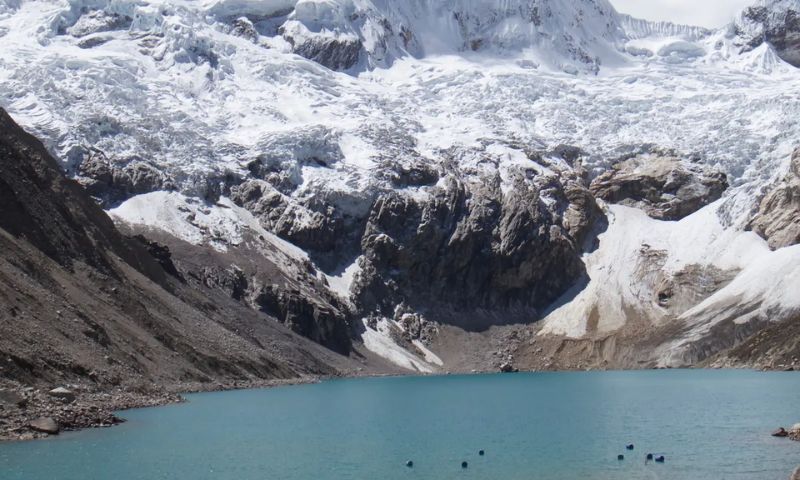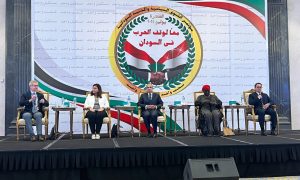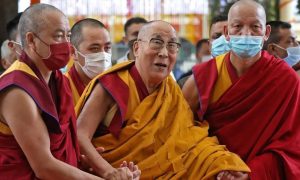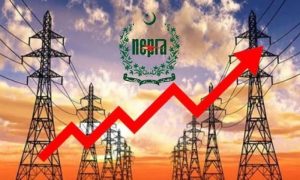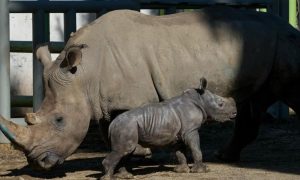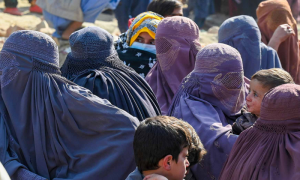HUNZA: In the mountainous far north of Pakistan, Tariq Jamil undertakes the task of measuring glacier movement and capturing images on the steep slopes of the Hunza valley.
His subsequent report integrates data from sensors and a nearby camera positioned close to the Shisper glacier, informing his village downstream after an hour’s hike.
At 51 years old, Tariq’s objective is to rally the 200 families of Hassanabad, nestled in the Karakoram mountains, to safeguard their village and traditional lifestyle, increasingly threatened by the emergence of unstable lakes due to melting glacier ice.
When these glacial lakes overflow or their banks weaken, they unleash devastating floods, destroying bridges, buildings, and fertile lands across the intersecting Hindu Kush, Karakoram, and Himalayan mountain ranges in northern Pakistan.
Forecasts from the International Centre for Integrated Mountain Development (ICIMOD) indicate that Himalayan glaciers may lose as much as 75 percent of their ice by the century’s close due to global warming.
Once all the sensors are in place, village representatives will have access to mobile-monitored data, emphasizing the importance of local insights as primary observers with invaluable experiences.
Hassanabad participates in the UN-supported Glacial Lake Outburst Flood (GLOF) II initiative, aiding downstream communities vulnerable to glacier melt.
Despite insufficient funding to assist those most affected by climate change, villagers stress the urgent need for increased support to adapt and prepare for potential glacial lake floods.
“The requirements are vast,” remarks Karma Lodey Rapten, Regional Technical Specialist for Climate Change Adaptation at the United Nations Development Program (UNDP).
Pakistan stands as the sole recipient of adaptation funding from the Green Climate Fund, crucial for mitigating the risks posed by such floods under the Paris Agreement.
While nations like Bhutan collaborate with other financiers to mitigate glacial lake flood threats, the $36.96 million GLOF II project, set to conclude in early 2025, serves as a global standard for regions contending with similar dangers, spanning from the Peruvian Andes to China.
Since 2017, weather stations and diverse sensors monitoring rainfall, water discharge, river, and lake levels have been deployed under Islamabad and UNDP administration. GLOF II has introduced village speakers for timely warnings and implemented infrastructure like stone-and-wire barriers to impede floodwaters.
In Hassanabad, a local vigilantly observes the feed from a high-altitude camera tracking water levels in the river near the glacier’s base, particularly during precarious seasons like summer when an ice-dammed lake from the Shisper glacier tends to form.
Pakistan ranks among the most vulnerable nations to glacial lake floods, with 800,000 people residing within 15 kilometers (9.3 miles) of a glacier. Many Karakoram residents have established homes on fertile riverbanks originating from glaciers.
In neighbouring India, likely triggered by a partial glacial lake burst in the Himalayas following an avalanche and heavy rainfall, floods in October claimed potentially 179 lives with many still unaccounted for. An early warning system was under construction near the lake but remained unfinished.
A recent study published in Nature Communications revealed that globally, 15 million people face the looming threat of glacial lake flooding, with a significant portion—2 million—in Pakistan alone.
Between 2018 and 2021, Pakistan experienced approximately 14 glacial lake outburst floods (GLOFs). However, an alarming escalation occurred in 2022, with the number spiking to 75, as reported by the UNDP.
Jamil’s village has narrowly escaped devastating floods multiple times over the past three years. Evacuations, timed with precision, have spared lives, yet the fear persists among residents, many of whom worry about potential floods even as they sleep. The financial toll has been severe, with homes and lands repeatedly destroyed, most recently in 2022.
In Chalt village, tragedy struck last year when a deluge of dark water surged through the valley, sweeping away Zahra Ramzan’s eleven-year-old son, Ali Mohammad. Ramzan, stricken with immeasurable grief, remains haunted by the inability to find closure.
Residents lament the scarcity of information about the impending risks. Ramzan, in particular, lives in perpetual apprehension during heavy rains, keeping a vigilant eye on her remaining children.
In Hassanabad, Jamil and a team of 23 volunteers have taken proactive measures. Equipped with first aid training and evacuation strategies, they vigilantly monitor the glacier, seeking guidance from experts and officials each summer.
Their aspirations include securing substantial international funding to extend protective barriers twentyfold from the current length. Additionally, they seek interest-free loans for reconstructing demolished homes and fortifying residences with resilient materials. Access to improved mobile reception for monitoring feeds is also crucial in their quest for better preparedness.
Pressure mounts on affluent nations to honor commitments toward aiding developing countries as the UN’s COP28 climate summit approaches on Nov 30. Despite the Green Climate Fund’s announcement of $9.3 billion raised in October, falling short of its $10 billion goal, the broader $100-billion climate finance pledge to developing nations remains unmet this year. This delay, three years past its deadline, persists despite the United Nations estimating the actual requirement to exceed $200 billion annually by 2030. Additionally, ICIMOD’s report highlights the irreversible changes to glaciers in the Hindu Kush Himalayan region due to global warming, with over 200 hazardous glacial lakes present.
The village of Darkut, part of the Glacier Lake Outburst Floods II, stands encircled by mountains and glaciers amid lush plains where yaks graze. A deep turquoise lake now lies at the foot of the nearby Darkut Glacier, formed after the glacier’s retreat.
Musafir Khan, a 75-year-old resident, recalls the transformation: “Until 1978 … this whole place was a glacier; the pool of water came later,” pointing to the lake that emerged as the glacier receded. Unlike the ice-dammed lake at Shisper, Darkut’s lake formed within the soil and rocky landscape left behind by the retreating glacier.
ICIMOD researcher Sher Muhammad notes that while northern Pakistan has seen fewer Glacial Lake Outburst Floods (GLOFs) from moraine-dammed lakes, other regions in mountainous Asia report higher casualty rates associated with these lakes than with ice-dammed ones. Muhammad warns that the risks from both types of lakes may escalate.
Muhammad Yasin, an environmental sciences graduate researcher at Karakorum International University, is actively studying the extent of Darkut glacier’s melting. He emphasizes community awareness of the lake’s risks that we have informed the community about existing risk factors in this lake.
Despite past flash floods prompting numerous families to depart, Musafir Khan, born and raised in the remote village, highlights that many have resettled nearby after previous calamities. In Hassanabad, where families have thrived for centuries amidst orchard fields framed by towering mountains, the thought of relocation triggers disbelief. The lack of resources and the deep-rooted ties to ancestral grounds, where their forebears rest, leave many feeling unable to depart from their village.
“If the flood will cut us off, we will miss the nature of this village, our neighbours and relatives,” said Tehzeeb, Jamil’s 15-year-old daughter.
“Like a bird in a cage,” Jamil said of moving to a city. He was open to exploring the option, but said he would focus on keeping the village alive.
“It’s my responsibility to prevent the community from (facing) any disaster.”









